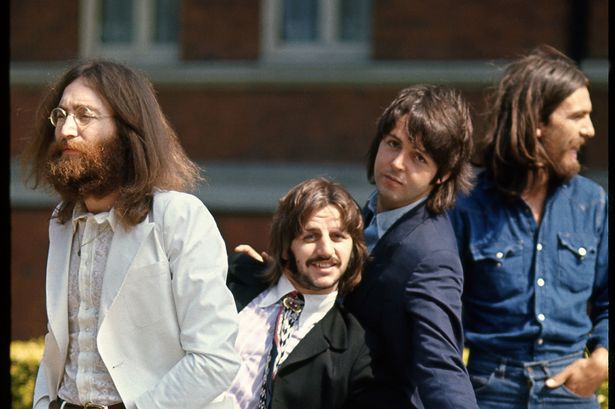
Her Majesty” is one of the first “hidden” tracks to appear on a rock album and that it’s The Beatles’ shortest song, according to Cheatsheet.
It wasn’t supposed to appear on Abbey Road at all. The Paul McCartney song originally sat smack dab in the middle of the Side 2 medley before being removed. You can hear the two mistakes The Beatles left in the song if you listen closely.
 The Story behind Beatles' Her Majesty - Paul's memory
The Story behind Beatles' Her Majesty - Paul's memory
"I like the Queen. When we grew up she was a babe.We were like 11, she was 21 and good looking. And she had a figure on her."
This 23-second throwaway song was originally intended to be part of the long medley that dominated the second half of Abbey Road.
The noisy chords and cymbal crash at the beginning of the song were actually the end of “Mean Mr. Mustard.” The single note hanging on at the end was the beginning of “Polythene Pam.”
Paul’s gentle strumming linked the two songs before he instructed engineer John Kurlander to cut “Her Majesty” from the medley. We understand why Macca wanted it removed. The tune doesn’t fit in with the vibe of the rest of the medley. It comes across as a throwaway, so Paul wanted it thrown away.
The only trouble was that EMI records employees working at Abbey Road weren’t permitted to just throw away tape at the behest of a Beatle.
Harrison review 'Abbey Rd.' track by track (audio)“I liked the A-side,” Lennon told Rolling Stone. “I never liked that sort of pop opera on the other side.
When it came to creating their penultimate album, Abbey Road, in 1969, for the first time in his career, The Beatles were no longer the only vessel that Lennon had at his disposal to express him creatively. (Faroutmagazine)
After forming The Plastic Ono Band, he became slightly disenfranchised with life in the Fab Four, and he stopped putting his foot down as authoritatively. Instead, he chose to let McCartney take the lead on the project.
“I liked the A-side,” Lennon told Rolling Stone. “I never liked that sort of pop opera on the other side. I think it’s junk. It was just bits of song thrown together. And I can’t remember what some of it is. Come Together’ is all right, that’s all I remember. That was my song. It was a competent album, like Rubber Soul. It was together in that way, but Abbey Road had no life in it.”
For many people, Abbey Road was the moment that George Harrison broke free from the kid brother shackles of his bandmates and rose to the forefront of The Beatles.
“At that point in time, Paul couldn’t see beyond himself,” Harrison told Guitar World back in 2001. “He was on a roll, but… in his mind, everything that was going on around him was just there to accompany him. He wasn’t sensitive to stepping on other people’s egos or feelings.”
Furthermore, the adoration that Abbey Road received bemused Lennon. Ringo He later claimed that “none of the songs had anything to do with each other, no thread at all, only the fact that we stuck them together”. Contrastingly, some years later, Ringo Starr would name the album as his favourite piece of work by the group. Unlike Lennon, he appreciated the medley too, although the drummer still admitted they “weren’t songs”.
“For me, that would be the second side of Abbey Road,” he said. “That one is my favourite because I just love all those bits and pieces that weren’t full songs that John and Paul had been working on and pulled all together — ‘Mean Mr. Mustard,’ ‘Polythene Pam,’ and ‘She Came in Through the Bathroom Window.'”
Recently the rare 1958 console used by the Beatles at Abbey Road Studios was up for sale.

Named REDD.37, after its design team in EMI’s Record Engineering Development Department, the desk was used for the Beatles initial recordings in Abbey Road’s Studio One, for orchestral overdubs throughout their career and in the making of Let It Be, their final album. This REDD.37 console is one of only three ever produced by a team led by Len Page, and has been cared for since the ’90s by Lenny Kravitz – who is said to have kept it in pristine condition.
The REDD.37 is being paired with EMI’s four-track Studer J37, one of only eight tape machines used at Abbey Road studios, as well as the earlier Studer C37 – a two-track stereo master recorder. No price is mentioned; interesting buyers are invited to inquire at the Vintage King website to learn more.
“Whether you’re looking to own a piece of history or trying to capture the magic of the ’60s London rock scene in your studio,” Vintage King says, “this REDD.37 package is the ultimate combination of function, form and style.”
The valve-driven REDD.37, itself an update of an earlier model constructed by Peter Burkowitz, was eventually supplanted when the REDD.51 was installed in Abbey Road’s Studio Two in January 1964.
